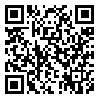1- Ferdowsi University of Mashhad
Abstract: (38 Views)
Background & objective: Childhood is known as the main risk stage for developing anxiety symptoms. Anxiety disorders are one of the most common childhood psychiatric problems and an important issue in the mental health of the society. One of the underlying factors in anxiety disorders is the inability to regulate emotions and manage emotional responses. Cognitive flexibility is also an aspect of flexibility and a multifaceted structure of executive functions and refers to the ability to flexibly change between rules or change between modes of thinking through the inhibition of irrelevant information, the effective use of attentional resources, and the ability to shift between regulated ways of thinking, can be beneficial when feeling out of control when dealing with anxiety. Many psychological interventions for anxiety include cognitive or behavioral strategies that aim to improve the ability to regulate emotions and cognitive flexibility. The Coping Cat Program (CCP) is the first program based on cognitive behavioral interventions to reduce anxiety in children, which actually aims to help children recognize the symptoms and feelings of anxiety in order to use specific strategies taught to cope with anxiety-provoking situations. Therefore, the present study was conducted to compare the effectiveness of the coping cat program on cognitive flexibility and emotional regulation of girls and boys aged 8 to 11 years with anxiety.
Methods: This research is semi-experimental with a pre-test-post-test design with a control group. The statistical population of the research includes anxious children aged 8 to 11 years (girls and boys) from schools in the 5th district of Mashhad, who were selected by purposive sampling, 60 people after completing the children's anxiety screening questionnaire and confirming the diagnosis of this disorder, included in the study and divided into four groups of 15 people. The experimental group and two control groups were placed. The tools of this research included Dennis and Vander Waal's Cognitive Flexibility Inventory (2010), Shields and Cicchetti's emotion regulation checklist (1998) and Birmaher et al Screen for Child Anxiety Related Emotional Disorders (1999). After selecting the subjects, the students were subjected to the intervention of the coping cat program in 16 60-minute sessions. The content of treatment sessions includes things such as building relationships and shaping the direction of treatment, identification of anxious feelings, identification of physical responses to anxiety, relaxation training, self-evaluation and self-reward training and review of learned skills, training in anxiety-provoking situations with various degrees of intensity. Data analysis was done using univariate and multivariate covariance analysis at a significance level 0.05 and in SPSS software version 27.
Results: The results showed that there was a significant difference in the post-test scores of cognitive flexibility, emotional regulation, and instability-negativity after removing the effect of the pre-test (p<0.001). Therefore, the cognitive-behavioral coping cat program has led to an increase in cognitive flexibility (p≤0.001) and emotional regulation (p<0.001) of anxious children aged 8 to 11 years. Also, comparing the effectiveness of this program, no difference was observed between girls and boys with anxiety.
Conclusion: Based on the effect of the coping cat program in improving the emotional regulation and cognitive flexibility of children, and considering that anxiety disorders during the sensitive period of childhood provide the background for disability and subsequent injuries, which bring many costs to society and are an obstacle for The development of individual and social skills and the successful performance of children; Applying this program in schools will help anxious children (both boys and girls) to gain a deeper understanding of their different emotions and thoughts in order to reduce their anxiety.
Methods: This research is semi-experimental with a pre-test-post-test design with a control group. The statistical population of the research includes anxious children aged 8 to 11 years (girls and boys) from schools in the 5th district of Mashhad, who were selected by purposive sampling, 60 people after completing the children's anxiety screening questionnaire and confirming the diagnosis of this disorder, included in the study and divided into four groups of 15 people. The experimental group and two control groups were placed. The tools of this research included Dennis and Vander Waal's Cognitive Flexibility Inventory (2010), Shields and Cicchetti's emotion regulation checklist (1998) and Birmaher et al Screen for Child Anxiety Related Emotional Disorders (1999). After selecting the subjects, the students were subjected to the intervention of the coping cat program in 16 60-minute sessions. The content of treatment sessions includes things such as building relationships and shaping the direction of treatment, identification of anxious feelings, identification of physical responses to anxiety, relaxation training, self-evaluation and self-reward training and review of learned skills, training in anxiety-provoking situations with various degrees of intensity. Data analysis was done using univariate and multivariate covariance analysis at a significance level 0.05 and in SPSS software version 27.
Results: The results showed that there was a significant difference in the post-test scores of cognitive flexibility, emotional regulation, and instability-negativity after removing the effect of the pre-test (p<0.001). Therefore, the cognitive-behavioral coping cat program has led to an increase in cognitive flexibility (p≤0.001) and emotional regulation (p<0.001) of anxious children aged 8 to 11 years. Also, comparing the effectiveness of this program, no difference was observed between girls and boys with anxiety.
Conclusion: Based on the effect of the coping cat program in improving the emotional regulation and cognitive flexibility of children, and considering that anxiety disorders during the sensitive period of childhood provide the background for disability and subsequent injuries, which bring many costs to society and are an obstacle for The development of individual and social skills and the successful performance of children; Applying this program in schools will help anxious children (both boys and girls) to gain a deeper understanding of their different emotions and thoughts in order to reduce their anxiety.
Type of Study: Original Research Article |
Subject:
Psychology
Send email to the article author
| Rights and permissions | |
 |
This work is licensed under a Creative Commons Attribution-NonCommercial 4.0 International License. |



